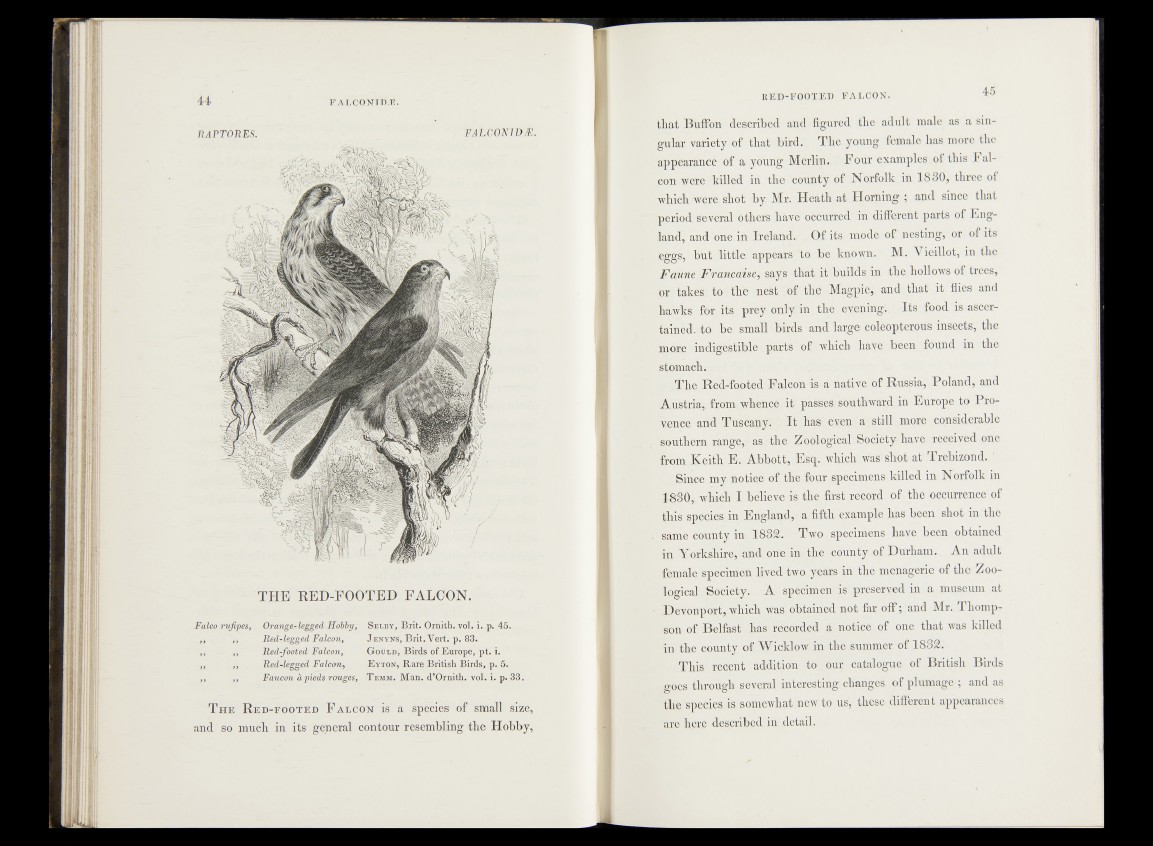
RAPTORES. FALCONIDÆ.
TH E R ED-FOOTED FALCON.
Falco rufipes, Orange-legged Hobby, Selby, Brit. Ornith. vol. i. p. 45.
,, ,, Red-legged Falcon, J enyns, Brit. Vert. p. 83.
,, ,, Red-footed Falcon, G ould, Birds of Europe, pt. i.
,, ,, Red-legged Falcon, E yton, Rare British Birds, p. 5.
,, ,, Faucon àpieds rouges, Temm. Man. d’Ornith. vol. i. p. 33.
T h e R e d - f o o t e d F a l c o n is a species of small size,
and so much in its general contour resembling the Hobby,
that Buffon described and figured the adult male as a singular
variety of that bird. The young female has more the
appearance of a young Merlin. Four examples of this Falcon
were killed in the county of Norfolk in 1830, three of
which were shot by Mr. Heath at Horning ; and since that
period several others have occurred in different parts of England,
and one in Ireland. Of its mode of nesting, or of its
eggs, but little appears to be known. M. Vieillot, in the
Faune Française, says that it builds in the hollows of trees,
or takes to the nest of the Magpie, and that it flies and
hawks for its prey only in the evening. Its food is ascertained.
to be small birds and large coleopterous insects, the
more indigestible parts of which have been found in the
stomach.
The Red-footed Falcon is a native of Russia, Poland, and
Austria, from whence it passes southward in Europe to Provence
and Tuscany. It has even a still more considerable
southern range, as the Zoological Society have received one
from Keith E. Abbott, Esq. which was shot at Trebizond.
Since my notice of the four specimens killed in Norfolk in
1830, which I believe is the first record of the occurrence of
this species in England, a fifth example has been shot in the
same county in 1832. Two specimens have been obtained
in Yorkshire, and one in the county of Durham. An adult
female specimen lived two years in the menagerie of the Zoological
Society. A specimen is preserved in a museum at
Devonport, which was obtained not far off ; and Mr. Thompson
of Belfast has recorded a notice of one that was killed
iu the county of Wicklow in the summer of 1832.
This recent addition to our catalogue of British Birds
goes through several interesting changes of plumage ; and as
the species is somewhat new to us, these different appearances
are here described in detail.